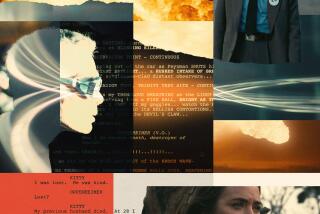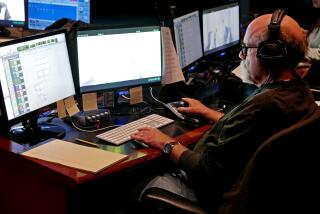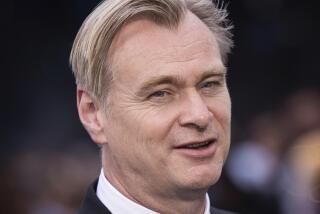The spectacle of “Tenet” may have been intended for the big screen, but writer-director Christopher Nolan is aware that there is still excitement to be had with home viewing. After a much-discussed (and COVID-19-delayed) global theatrical release earlier this year, Nolan’s time-bending spy film has now arrived on Blu-ray, DVD and VOD, with much of the explosive action intended to be just as mind-blowing in your living room.
“Home viewing has always been an enormously important part of the cycle of any film,” Nolan says. “I was born in 1970, home video came along when I was about 11 years old, and ever since it’s been the economic engine of the movie business.”
Despite recent comments decrying Warner Bros.’ announcement to send its entire 2021 release slate to HBO Max the same day the films hit theaters in the U.S., Nolan has his own preference for how his projects are released to viewers at home.
In an interview conducted before his criticism went public, Nolan noted, “Over the years I’ve partnered with the studios — in particular Warner Bros. — in putting enormous care and attention into how we translate the big screen experience into the different formats we’re releasing it on. I spent months and months working on this Blu-ray, working on the 4K UHD version of the film, working on the 4K streaming version. ... It’s something very close to my heart.”
The director, who believes audiences will go back to theaters as the pandemic subsides, also understands that the theatrical release of “Tenet” came at a time when many people were nervous — or simply unable — to venture out to cinemas. Although the movie played drive-in engagements in the Los Angeles area, indoor theaters in the county have been closed since March.
“In this situation, where we never got to release the film, it’s really exciting to get the movie out there,” Nolan says. “I live in Los Angeles and to not be able to release a film in your own hometown is very frustrating. It’s really cool that now people are going to get to see it.”
Nolan scripted the film — which stars John David Washington as a new recruit in a mysterious organization called Tenet, tasked with saving the world from a future threat — as his take on the espionage genre. It’s a hyped-up version of James Bond adventures, with massive set-pieces, exotic locations and the inclusion of a sci-fi element where the entropy of objects can be literally inverted. While one of the most memorable moments for Nolan involved crashing an actual 747 into a building, the most exciting sequence is a lengthy car chase that sees its vehicles moving both forward and backward in time.
“What I wanted to do, and the reason for the science fiction element, is that I wanted to give the audience a fresh experience of a car chase,” the director explained. “I wanted to give viewers a narrative reason for looking at a car chase in a different way. With this idea of inversion, the palindromic idea of things moving forwards and backwards at the same time, I felt that if we did our jobs right we could build on what we learned from decades of doing car chases. We wanted to really take it to another level.”
Nolan spent a long time working out the logistics of the chase, which plays out forward and then again in reverse as Washington’s character, dubbed the Protagonist, becomes inverted. Wanting to ensure that nothing in the sequence felt predictable, Nolan tasked his team, including stunt coordinator George Cottle, SFX supervisor Scott Fisher and cinematographer Hoyte van Hoytema, with coming up with ways to keep viewers on their toes.
“Putting a complicated sequence like this in front of the audience is a bit like doing a series of magic tricks,” Nolan explained. “And if you repeat a trick too many times the eye picks it up and starts to see it and your suspension of disbelief goes out the window. So what I wanted to do — and I’ve learned this over the years on different films — is to try to vary the technique from shot to shot to shot so that you’re always staying a little bit ahead of the audience. Just as the audience’s eye, which is a ruthless eye, starts to pick up on the technique, you change gears.”
“When [Nolan] comes up with an idea, you can guarantee he has thought every aspect of that idea to the furthest he can physically take it in his mind,” Cottle noted. “I remember him telling me that he was home with his kids and they came into his office at 9 a.m. and he was playing with two toy cars, one facing forwards and one facing backwards. They left, came back four hours later and he was still staring at the two cars. He really has such an incredible understanding of what he wants to see and what he wants to achieve. It really helps my job.”
Cottle, who collaborated with the filmmaker on his Batman trilogy and “Inception,” brought in 55 stunt drivers, including 20 from Los Angeles who had previously worked with Nolan. Fisher and his team rebuilt a fleet of cars and vehicles to be driven backward or forward, ultimately getting the backward-driving cars to up to 60 miles an hour without switching around the car’s chassis. In some shots, all of the background cars were driving in reverse while the hero car moved forward.
“We always stayed true to the geometry of the car,” said Cottle. “Even when they were going backwards, the steering wheel was at the back end of the car, which is like driving a forklift at 50 miles per hour. It makes it very unstable. But it makes the car act and perform in ways you just can’t replicate with any other made rig. It was a big task to not alter the cars too much, but I think it really showed.”
“They would thrash these cars around,” Nolan added. “Run it forward, run it backward, trying to see how fast it would go. Rerigging the cars so they were geared forwards to backwards reversed so they could drive very quickly in reverse and see what that did to the handling. They evolved a series of techniques over time of how we would do each individual shot.”
To film the sequence, production shut down six kilometers of the Laagna Tee highway in Tallinn, Estonia, a massive road Cottle compared to the 405 freeway in L.A., and shot the chase for 12 hours a day, every day. The initial part of the chase — where Washington Protagonist and his partner, Neil, played by Robert Pattinson, heist an object from a moving truck — was rehearsed and filmed as a complete sequence. Pattinson did some of the driving himself and the team modified an existing fire truck so Washington could jump onboard from the BMW and swing across the ladder for the heist.
Nolan and van Hoytema typically led the shoot from a high-speed SUV dubbed “the Edge,” which had the camera running from a rig on the roof. But Nolan also found himself crouched in the back of the hero cars hidden behind the actors and, at one point, he was harnessed to the back of a pickup truck to throw a key prop to Washington. The biggest challenge was not the stunts or the driving itself but actually keeping track of which car needed to go in which direction and whether the camera needed to be running forward or backward. The team relied on a precise previsualization of sequence to ensure each shot was right.
“The biggest challenge overall was getting there every day and trying to determine which technique to use for which shot,” Nolan said. “For obvious financial reasons we couldn’t just buy six versions of every car. The cars had to be reconfigured [for each shot] and that would take time, so it was incumbent on me, in coordination with George and Hoyte, to be able to tell the grip crew and the special effects crew which car we were going to use two hours down the line. We’d send off the BMW and it would have a driver installed in the back while we shot something else and so forth.
“Given the complicated nature of the sequence, that was quite hard to do. And when you made the call you didn’t want the wrong vehicle coming back because we thought we were going to run it forwards but actually we need to run it backwards. That was hours wasted. No one was really able to intuit these reverse scenarios. Once you made a mistake it had a lot of implications further down the line with scheduling. We spent a lot of time discussing it and analyzing it and thinking it.”
While “Tenet,” like “Inception,” is based on a what-if scenario, Nolan did consult with theoretical physicist Kip Thorne, with whom he’d previously worked on “Interstellar.” But “Tenet” also takes some scientific liberties. Nolan and VFX supervisor Andrew Jackson spent months discussing how to best portray the physics in the inverted world, particularly how the wheels of a car would spin in the dust and what an explosion would look like in reverse.
“The ‘If this were possible’ is a big get-out-of-jail-free card,” Nolan admitted. “I worked with Kip on ‘Interstellar,’ and ‘Interstellar’ was a project very close to his heart, and he wanted to do a film where the science was real and unassailable. ‘Tenet’ isn’t ‘Interstellar’ but Kip indulged me with helping me out with exploring these ideas. The basic science behind it is pretty sound. It’s a surprising fact that the laws of physics are symmetrical. They can run forwards and backwards and they’d be exactly the same, except for entropy. Kip gave us some guidelines on how he felt, were this possible to invert the entropy of an object or a vehicle, for example, how that would interact with the environment. It’s based on strictures of real science but obviously it’s a fanciful interpretation.”
As the cars, the characters and the world move in reverse during the latter part of the car chase, the sound and the soundtrack also are inverted. As he’d explored on “Dunkirk,” Nolan wanted Richard King’s sound design and Ludwig Göransson’s pulsating score to be fully integrated.
“When you get to the inverted part of the chase, Richard’s team had to come up with an approach to what things sounded like when things are reversed,” Nolan said. “You can’t just run the tape backwards. It had to be much more expressive than that, and they went into much deeper detail. Things like tires squealing and birds chirping — all of those things had to have really complicated choices made and really complicated processes done to the sounds. All of that is very much reinforced with what Ludwig is doing with the score, some of which is running forwards and some of which is running backwards at the same time. The mixers were able to really integrate that [and] put that all together to create an immersive sequence.”
Both Nolan and Cottle felt that the car chase — and “Tenet” overall — was able to break new ground, both technically and narratively, which many viewers will now experience for the first time.
“We did the whole chase backwards because these cars are in another timeline,” Cottle said, noting that he hasn’t seen a chase use cars like this previously. “The only way they’re getting through this whole chase is to be going backwards. Even when we were doing it we didn’t really know what we were doing — we were just doing what Chris told us to do. But we trusted him. I think we definitely took it to another level with what Chris wanted to achieve.”
“We were able to do more in the film than I ever thought possible, actually,” Nolan said. “When I wrote this one, particularly in terms of the action, I really went for it. I kind of overwrote it and I think in the back of my mind there was a list of things, like crashing a 747 into a building, where I was waiting for a tap on the shoulder from someone saying, ‘Look, this really isn’t possible.’ But the people I work with found a way to do all these things, so I think it’s exceeded my expectations in terms of what we could get onscreen.”
More to Read
Only good movies
Get the Indie Focus newsletter, Mark Olsen's weekly guide to the world of cinema.
You may occasionally receive promotional content from the Los Angeles Times.










